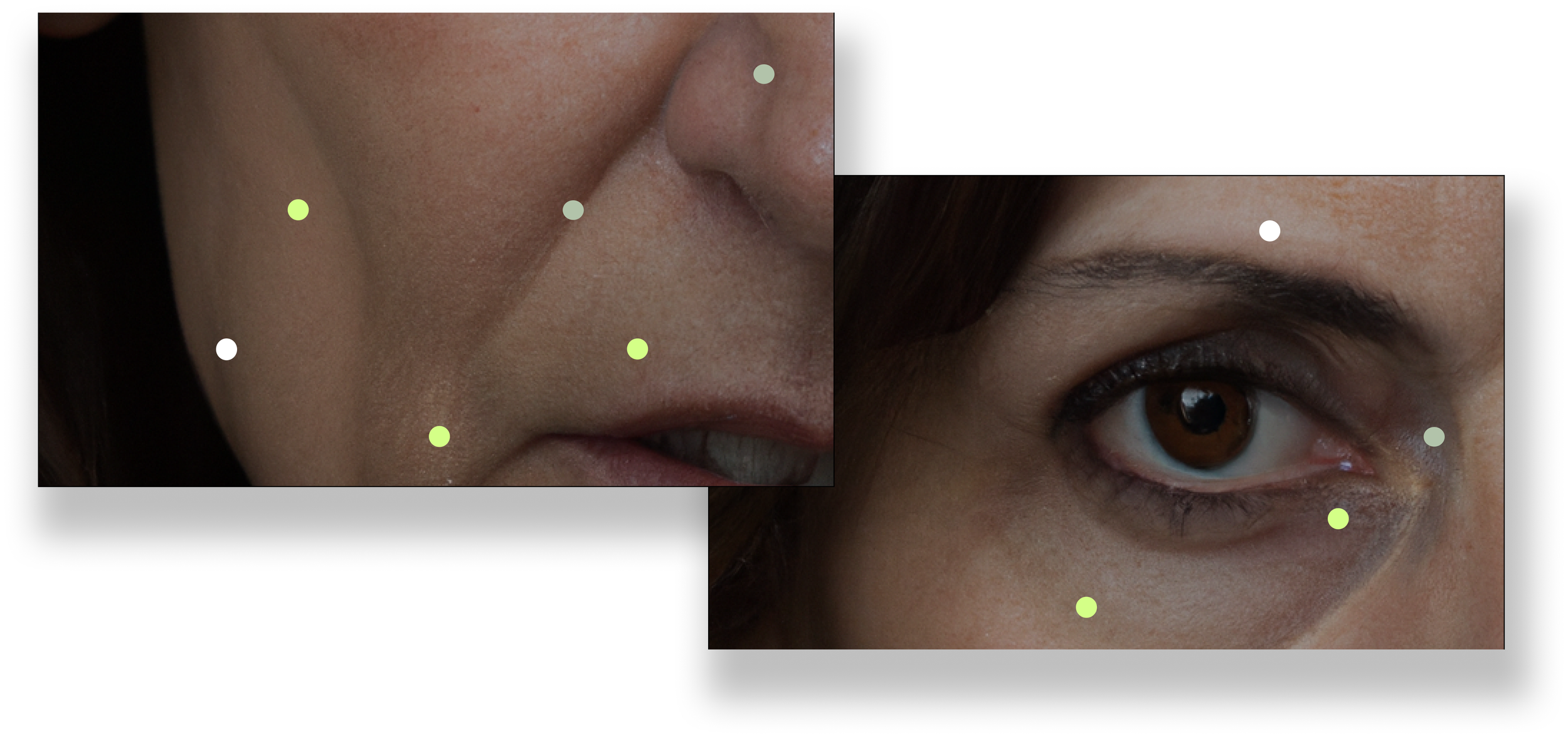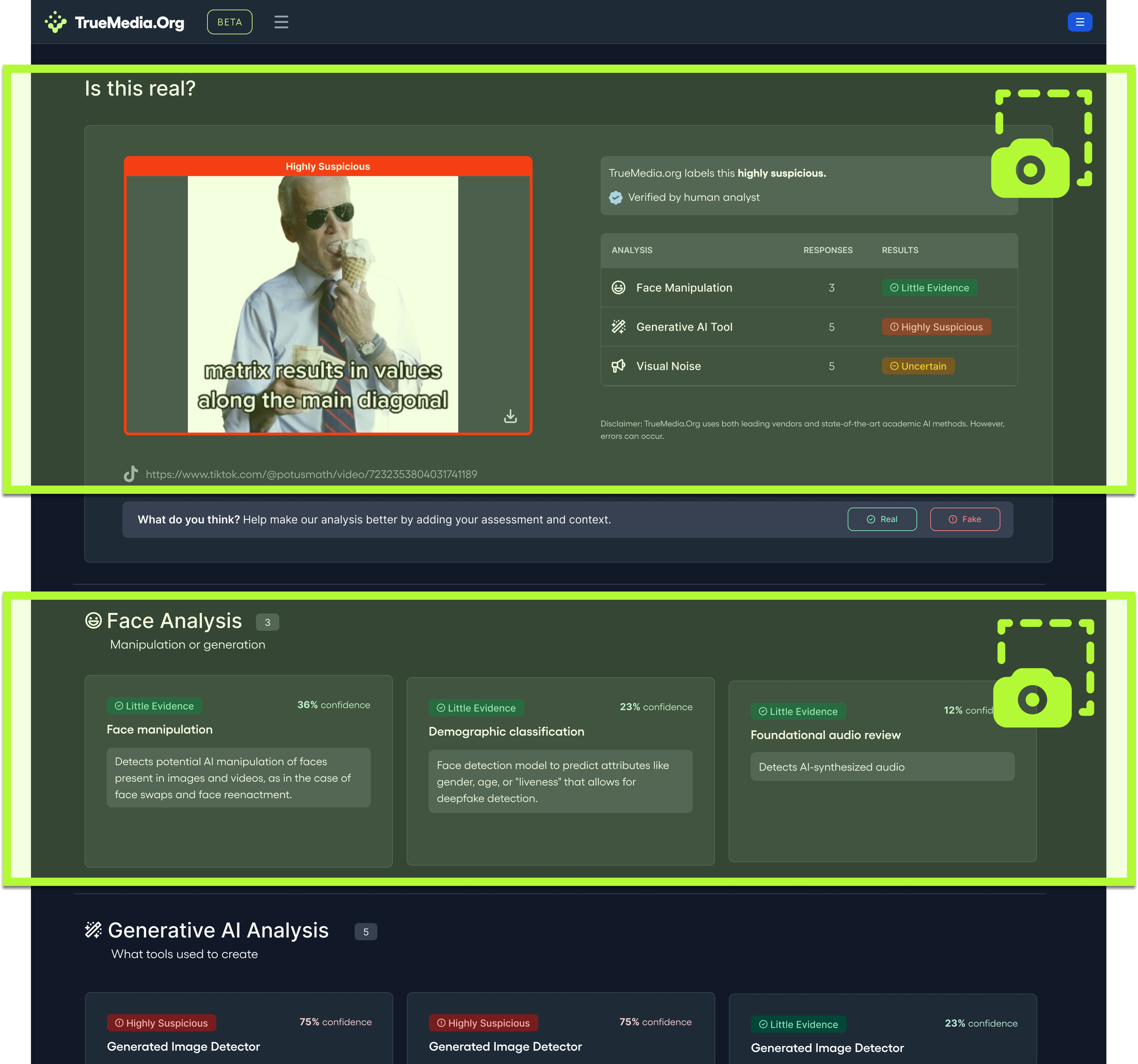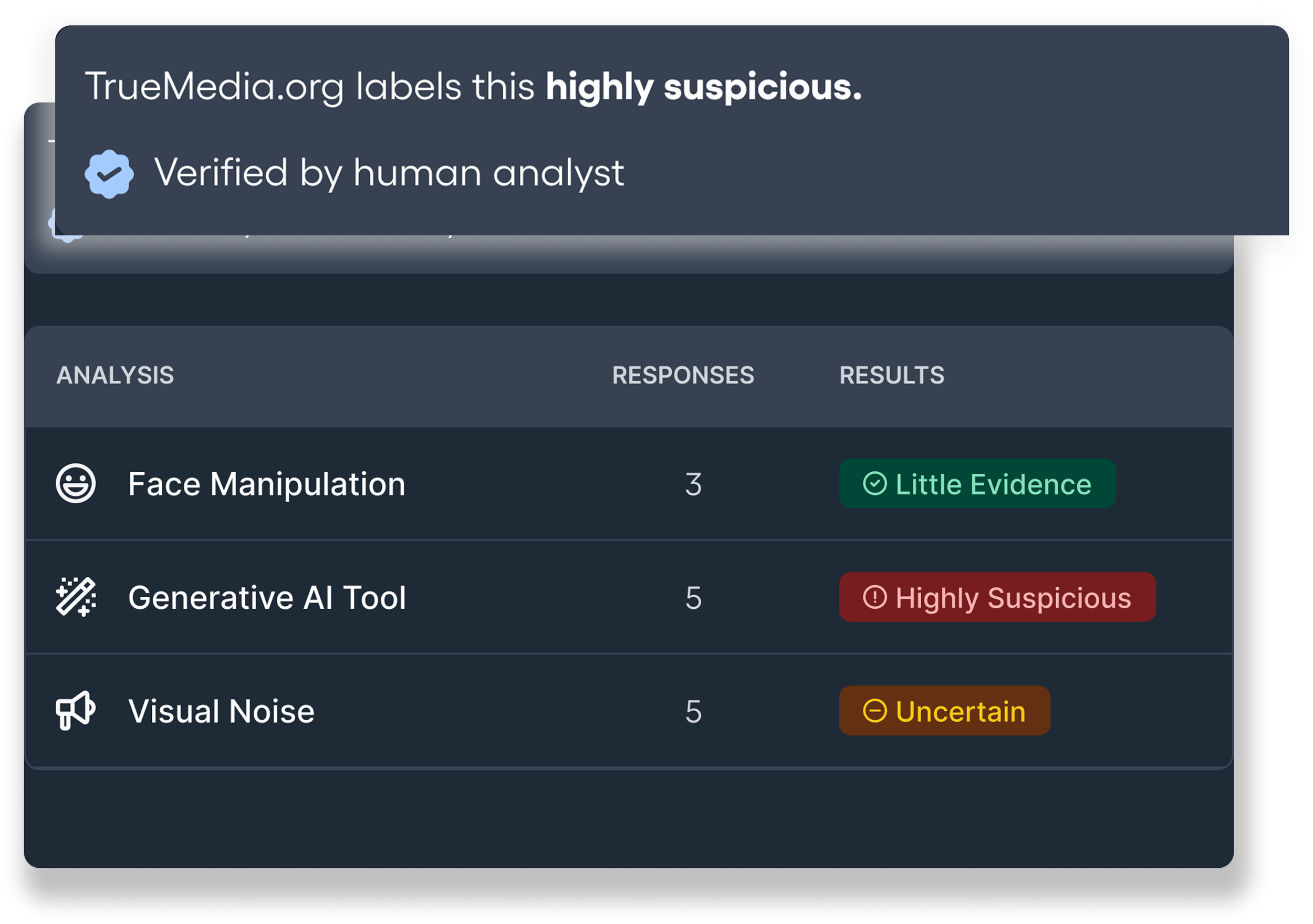TrueMedia.org // 2024
Team experience for deepfake detection
Role
Researched, designed, and user tested Team features
Created marketing campaign and landing page for new features
Team
Worked with Head of Product and team of front-end + ML engineers
Timeline
8 weeks
TrueMedia.org is an AI-powered platform that detects political deepfakes for image and video. In early access mode, the app had 2,200+ users ranging from individuals to employees at news, media, and policy institutions. We saw an opportunity to build an enterprise product with avenues to monetize.
Working with the Head of Product, I was tasked with needfinding, designing, user testing, and marketing Team features for our institutional users.
AI-generated images
How does TrueMedia.org work?
Users go to TrueMedia.org and can upload any social media link or personal file.
Next, they quickly get aggregated results from a suite of AI detectors.
Who’s using TrueMedia.org?
Anecdotally, we knew our clients were using TrueMedia.org within their teams. To verify this, I performed a data analysis on the userbase. Out of 2,200+ users, there were 122 distinct teams—signaling demand for possible features such as shared workspace, role-based access, or team analytics.
Bulk of the teams worked in news/journalism, tech, or public policy. Teams were small (2 to 20 members). We wanted to know how these attributes affected:
Permissions, access, and privacy for query results
Team structure, workflow, and deliverables
Finding design opportunities
We conducted interviews with 6 client teams and integrated feedback on a rolling basis. Interviewees were selected for high usage or partnership potential, including major news organizations, fact checkers, and think tanks.
Insights from the first two interviews shaped our initial designs, revealing three design opportunities. With additional interviews and usability testing, these areas evolved into the final design.
1: Team history viewable by default
Five out of six client teams supported transparency internally and externally. This meant allowing query results to be public via URL. However private query results were still required for scenarios involving sensitive or copyrighted media and media exclusives.
Our solution: All query results can be seen with URL unless otherwise marked private. Private results can still be seen by users in the same organization.
We created a “Team History” tab on the results page, allowing users to view all queries made by members in their organization. For better user flexibility, users can also mark individual query results private here.
Given most teams using our platform are small, we implemented a flat permissions structure for actions like marking pages private to reduce friction in collaboration.
2: Media organization
When asked about workflows, our initial interviews indicated a need to organize query results by project. However as interviews continued, we learned teams were satisfied with collating results off-platform.
For all teams, TrueMedia.org was one of many OSINT and AI tools providing analysis.
Teams would screenshot key result sections for use in fact checking, internal memos, policy reports, and published articles.
We knew workflows continually evolved with a growing set of tools. Thus query organization was deferred until client workflows stabilized.
3: Human-in-the loop as value add
Our initial interviews established how teams enriched TrueMedia.org results off-platform. More experienced team members offered additional context for less savvy users through internal documents.
Teams also liked (but were surprised by) by our human verification badge.
Taken together, we knew that users saw human analysis as a huge value add.
We implemented email updates announcing human verification on past queries to highlight this feature. We also explored different ways teams could supplement analysis directly on the results page.
We showed a prototype to 4 more teams. Three out of four teams found the features superfluous. While they shared TrueMedia analysis externally, users registered on the platform worked independently.
Our final solution instead was to implement an export feature and sharing functions instead. Images can be downloaded with the TrueMedia.org verdict as a graphic. Public pages can be shared via link.
Team Management
We designed the login flow and team settings but opted for a third-party login to ease engineering load. I’ve included our original team invite flow and settings page below.
Email Marketing & Landing Page
We focused on inbound marketing via email announcements and our website. I was responsible for creating an email campaign plus visual assets to introduce Team features as they were rolled out. Emails were customized for different segments—existing team users, existing individual users, and newly onboarded users.
I also created the design, assets, and marketing copy for the Teams landing page.
Reflection
A key challenge of designing for emerging tech like deepfake detection is adapting to evolving use cases. Teams in large, established organizations are often slow to solidify new tools into their workflow. In fact, our interviews with these teams were rarely with the end user. Rather, they were technology specialists who vet new tools for internal use—which made it more difficult to understand how teams worked specifically.
While custom solutions were possible, they required more engineering capacity than the team had at the time.
Other case studies
HabitMeal (coming soon) // AI-enabled meal planning tool
Pynx.ai // Web3 news summarization tool
DFNX Freight Exchange // B2B freight logistics marketplace













